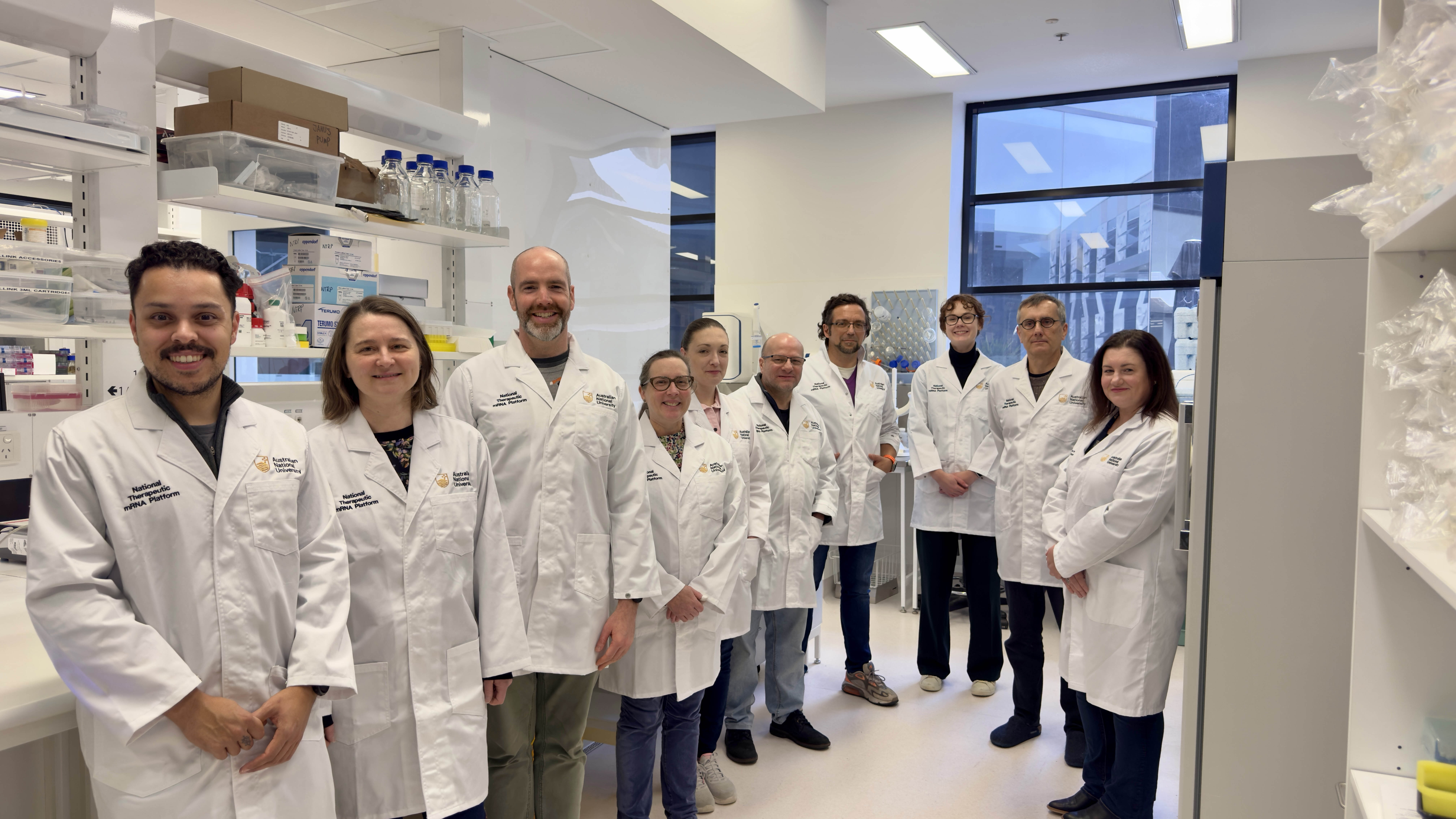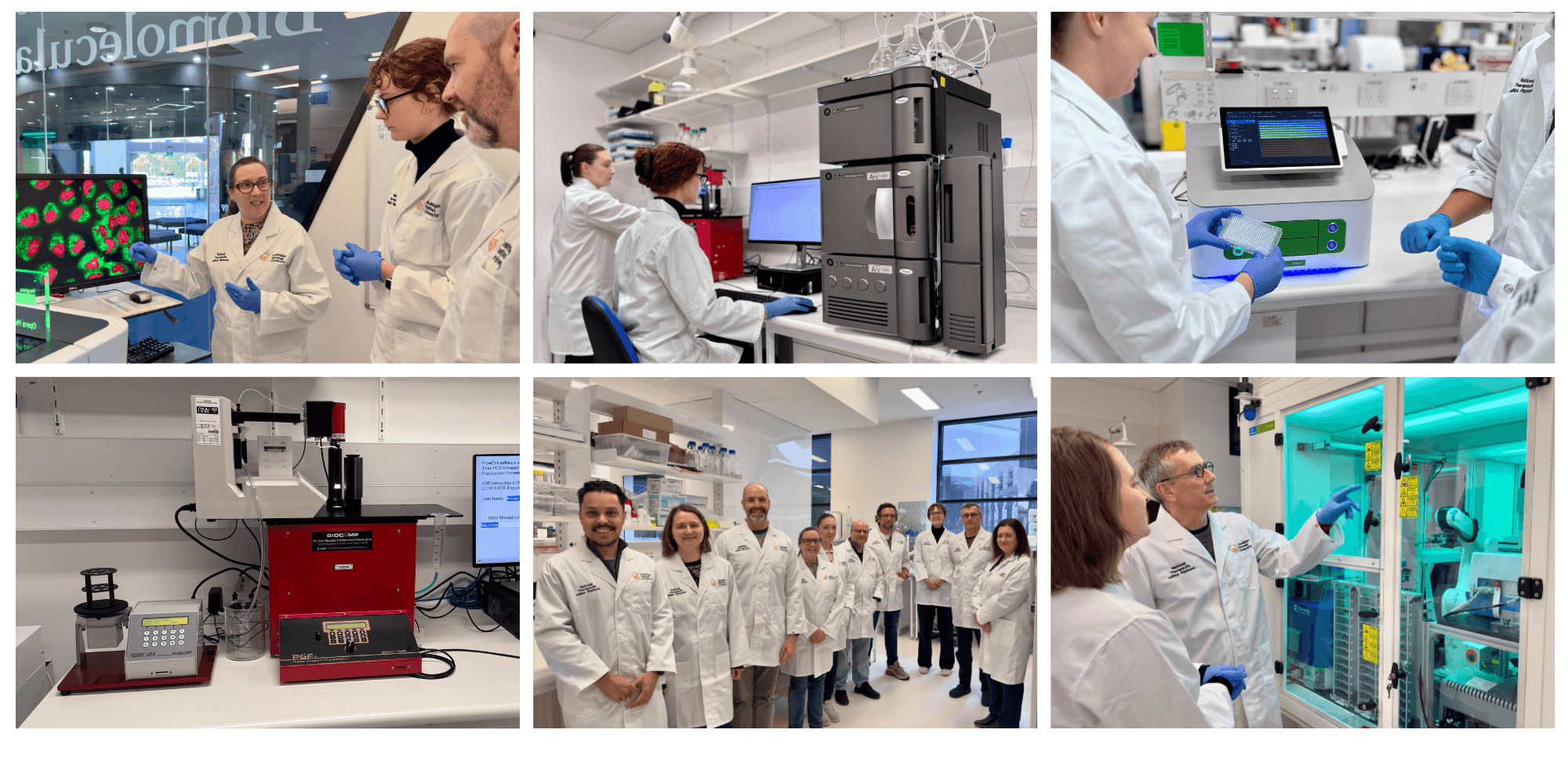
National Therapeutic mRNA Platform
The National Therapeutic mRNA Platform combines advanced laboratory and computational technologies to accelerate the design, testing and optimisation of novel mRNA therapeutics.
Content navigation
About
The National Therapeutic mRNA Platform (NTRP) is a newly established facility for streamlining the design, testing and optimisation of mRNA therapeutic candidates. The Platform aims to accelerate the early research to preclinical phases of drug development across diverse applications.
The NTRP offers an integrated, high-throughput pipeline, from computational mRNA sequence design through to cell-based expression and stability testing. Clients can opt to access the entire pipeline or select the parts of interest.
The NTRP will offer a comprehensive range of customisable services to clients, including:
Data-driven computational mRNA sequence design
- AI-assisted optimisation (UTRs, codon, structure)
- Expression and modelling (immune/toxicity profiling)
High-throughput production and testing
- In vitro transcription (IVT) template preparation
- mRNA production
- Fast protein liquid chromatography (FPLC) and High Performance Liquid Chromatography (HPLC) purification and analysis
- Quality control and analysis
Quantitative profiling of function & stability
- Cell-free and cell-based expression and testing
- RNA stability and modification analysis
- Translation profiling
Collaborative and flexible service offerings
- Access the entire pipeline or specific services
- Options tailored to your target(s) and budget
Another important aspect of the NTRP is the collaboration with community and consumer groups during the development of mRNA therapies. The NTRP uses a co-design approach by working with consumer groups and people with lived experience, as well as medical doctors and hospitals, to enhance the translational impact of new therapeutics.
Equipment
Revvity Fontus NGS Liquid Handling Workstation
The Fontus NGS workstation enables the automation of key laboratory processes to increase throughput, reduce human error, enhance accuracy, reproducibility and quality, and minimise contamination risk.
Applications:
- Synthesis and purification of DNA template.
- In-vitro transcription reactions to synthesise mRNA.
- Magnetic bead-based purification of mRNA.
- Cell-free in-vitro translation reactions.
- Quality control assays.
BioComp Instruments Gradient Master and Piston Gradient Fractionator with Triax flow cell
This system is used to perform top-down fractionation of density gradients with absorbance (260 nm, 280 nm) and fluorescence monitoring (470 and 570 nm LEDs and filters for EGFP/FITC and mCherry).
Applications:
- Polysome profiling for translation analysis by sucrose gradient fractionation.
- Ribosome profiling, or Ribo-Seq, also available.
Liquid Chromatography Systems
The NTRP houses three liquid chromatography systems dedicated to the following applications:
- Cytiva ӒKTA pure chromatography system with autosampler and fraction collector for high-throughput RNA purification.
- Cytiva ӒKTA pure chromatography system for protein and protein complex analysis and purification.
- Waters Arc Premier High Performance Liquid Chromatography (HPLC) System with Waters Fraction Manager for RNA purification and analysis.
Revvity EnVision Nexus Multimode Microplate Reader
The EnVision Nexus is a multimode plate reader fitted with filter-based technology for absorbance, fluorescence, luminescence, and time-resolved measurements.
Applications:
- Real-time translation analysis.
- Quality control assays.
Revvity FlexDrop iQ Non-contact Dispenser
The FlexDrop iQ is a rapid, precise and contact-free dispenser.
Applications:
- DNA template preparation in multi-well microplate format.
- Quality control assay plate preparation.

More information
People
Location
Deliveries & Couriers
The John Curtin School of Medical Research
Stores - Level 1 (Ground Floor)
Building 131, Garran Road
The Australian National University
ACTON ACT 2601
Post Address
National Therapeutic mRNA Platform
The John Curtin School of Medical Research
Building 131, Garran Road
The Australian National University
ACTON ACT 2601




